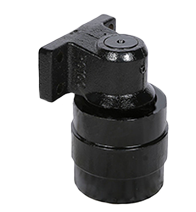Oct 25, 2023
What are the twenty-four solar terms?
The twenty-four solar terms are twenty-four solar terms that reflect the seasonal characteristics of natural phenomena and agricultural activities in a year. That is, Beginning of Spring, Rain, Jingzhe, Vernal Equinox, Qingming, Grain Rain, Beginning of Summer, Xiaoman, Ear Grain, Summer Solstice, Minor Heat, Major Heat, Beginning of Autumn, End of Heat, White Dew, Autumnal Equinox, Cold Dew, Frost Descent, Beginning of Winter, Light Snow, Heavy Snow, Winter Solstice, Minor Cold, and Major Cold. The twenty-four solar terms are based on the solar calendar. According to the position of the sun on the ecliptic, starting from 0° of the ecliptic longitude, every 15° is a section. There is one "middle energy" and one "solar term" every month, and the whole year is divided into ten. The two "Zhong Qi" and the twelve "solar terms" will be collectively referred to as solar terms from now on, with a total of twenty-four solar terms. Names with distinctive meanings are given based on astronomical, climatic and agricultural production seasons. The twenty-four solar terms are a unique creation of ancient China, originating from the middle and lower reaches of the Yellow River. It takes the climate of the Yellow River Basin as the background and combines natural seasonal phenomena with agricultural production activities as the content. The vernal and autumnal equinoxes represent the equinox of day and night and a moderate climate; The summer solstice and winter solstice signify the arrival of summer and cold winter respectively; The beginning of spring, the beginning of summer, the beginning of autumn and the beginning of winter respectively represent the beginning of the four seasons of spring, summer, autumn and winter; Rain indicates the beginning of the rainfall season; Jingzhe is when hibernating animals begin to revive and wait for emergence; Qingming means that the weather is getting warmer, the grass and trees are new and green, and the scenery is fresh; Grain Rain is when rainfall begins to increase, which is beneficial to grain growth; Xiaoman means that the grass and trees are beginning to flourish, and the grains of summer-ripened grains are beginning to be full; Eargrass is a busy time of year for farming, and summer harvesting, summer management, and summer planting need to be carried out in a timely manner; Minor Heat and Major Heat are the hottest seasons of the year; Sushu means the end of the hot season; White dew means that the temperature has dropped, the humidity is still high, and there is a lot of dew; Cold dew means that the ground radiation cools quickly and the condensed dew has a low temperature; Frostfall means that the weather is getting colder and frost begins to form; Light snow and heavy snow indicate the beginning of snowfall season; Xiaohan and Dahan are the coldest seasons of the year.
View More
